Getting Ski-Fit: Preparing to Make the Most of Your SKi Holiday
A week in the mountains is one of the most refreshing holidays you can take — crisp air, stunning views, and the thrill of being out on the slopes each day. But at 2,000 metres above sea level, even the most leisurely ski holiday can be physically demanding if your body isn’t used to regular exercise. Walking in ski boots, carrying equipment, and simply moving around at a higher altitude all use more energy than you might expect and can leave you wishing you had more energy to get the most out of your ski holiday.
With a little preparation, you can minimise the effects of altitude, reduce the risk of injury, and recover faster, so you can enjoy every moment – both on and off the slopes.
We recommend starting your preparations sooner rather than later (around 10-12 weeks before your holiday is ideal!) to help your body adapt gradually and avoid injuries.
Disclaimer – This blog is designed to help inspire and encourage you in your ski holiday preparations, but we recommend speaking with a trained medical professional if you have not exercised in a long time or are recovering from injury, before embarking on a new exercise routine.
Focus Areas to get Ski-Ready
Having a good level of general health and fitness will be beneficial, but there are some specific areas that will be relied upon more heavily when skiing that require some specific attention in the build-up to your holiday.
Strength and Stability
Exercises that target your legs, hips, and core muscles will make a big difference to your control on the slopes and your endurance through the week.
- The core muscles – These help you to maintain your balance – always important when it comes to skiing! Having good balance and core strength helps reduce falls and control your speed.
- The Gluteal Muscles – One of the essential muscle groups used when skiing, these muscles move the leg away from the centre of your body (e.g. snowploughs) and assist in leg rotation, which is important to steer your skis!
- Knee flexors and extensors – When skiing, you will find yourself bending and straightening your legs as you absorb the impact of the slope. Your hamstring and quadricep muscles protect the anterior cruciate ligament, a particularly sensitive knee ligament that can snap if put under too much pressure.
Cardiovascular Fitness
Skiing is as much about endurance as strength. Even if you don’t plan to ski every day from the first to the last lift, at 2,000m altitude, your heart and lungs work harder, so even climbing the stairs in the chalet can leave you breathless.
Incorporating 2 -3 sessions of moderate activity per week will help build up your lungs and stamina. For example:
- Brisk walking: No equipment necessary, and you can add small hills for extra benefit.
- Cycling (indoors or outdoors): Builds leg endurance and cardiovascular fitness, with low impact.
- Swimming or water aerobics: Excellent for joint-friendly fitness.
- Dancing or low-impact aerobics: Fun, social, and great for coordination!
Tip for beginners: Shorter, more frequent sessions (e.g., 20 minutes a day) can be just as effective as longer ones — consistency is what counts most.
Balance and Flexibility
Having good balance helps your body respond quickly while on uneven snow and helps prevent falls, while flexibility reduces stiffness and soreness and helps prevent injury.
The best way to improve balance and flexibility is gradually over time with gentle and incremental exercise. It’s also vital to warm up with some simple stretches before heading out on the slopes.
Example Exercises
We’ve provided some example exercises that help target specific muscle groups and increase balance & flexibility.
If you’d like to turn the below exercises into a short, effective routine, you can follow a simple HIIT-style (High Intensity Interval Training) format. Don’t be put off by the name — it’s really just about alternating between periods of activity and rest, at a level that feels right for you.
Here’s how it works:
- Perform each exercise for up to 30 seconds, working at your own pace — the goal is steady effort, not speed.
- Rest for 30 seconds between exercises.
- Once you’ve completed them all, take a short break, then repeat the whole circuit 2 or 3 times for a 20–30 minute workout.
Try to complete this workout 3–5 times a week.
As your body adapts, you can gradually shorten the rest periods and extend the exercise time, making each session a little more challenging — and more rewarding.
Remember: it’s perfectly fine to start gently. The key is consistency and listening to your body. Whether you’re powering through a wall sit or holding a balance pose, every effort helps you arrive in the mountains fitter, stronger, and ready to enjoy your holiday.
Squats
How: Stand with feet shoulder-width apart and lower down as if sitting back into a chair.
Beginner-friendly: Sit down in a sturdy chair, then stand back up without using your hands.
Advanced: Try doing single-leg squats for variation and to improve balance. Weights can also be added if you have them.

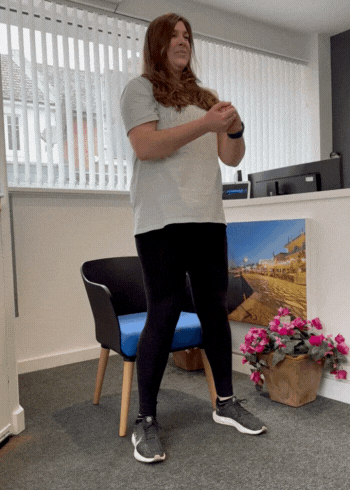
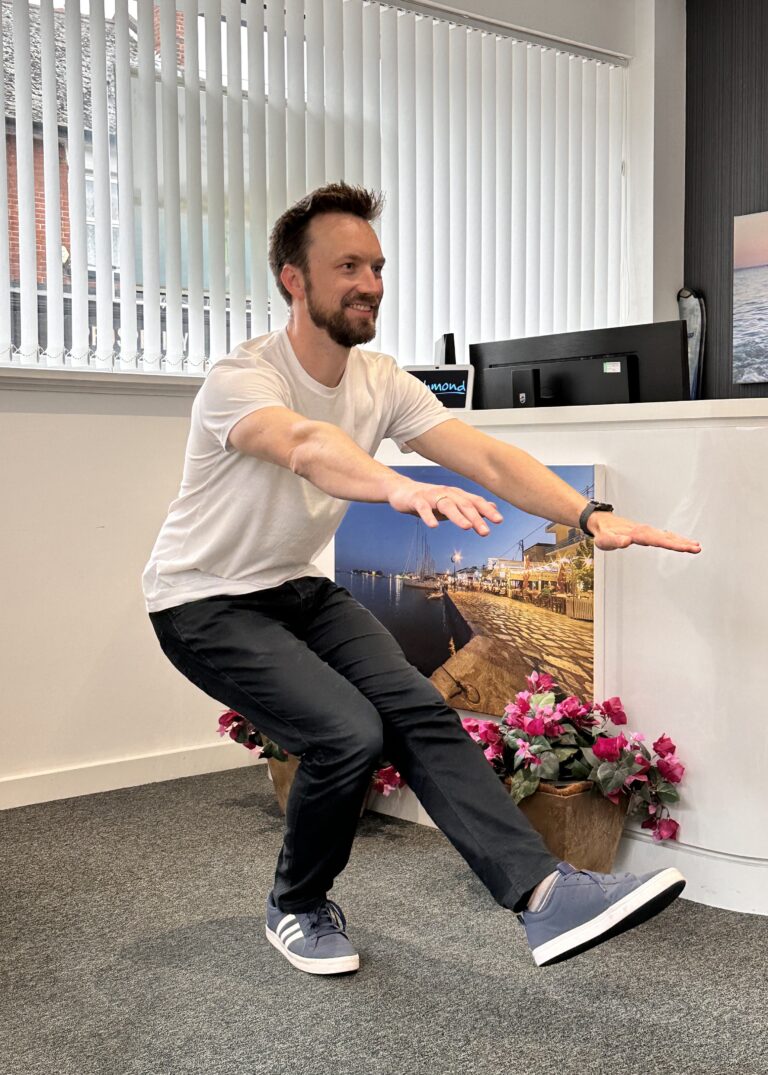
Forward Lunges
How: Stand with feet shoulder-width apart, shoulders back and core tight. Lift your right leg and take a big step forward (don’t overextend!). Lower your body towards the ground until your right upper thigh is parallel to the floor and your right knee forms about a 90-degree angle. Straighten up by pushing through your right heel to raise to standing.
Beginner-friendly: Perfect your technique with lower repetition; move slowly and maintain control before increasing the reps.
Advanced: Once you’ve perfected the technique, you can add weights if you have them.
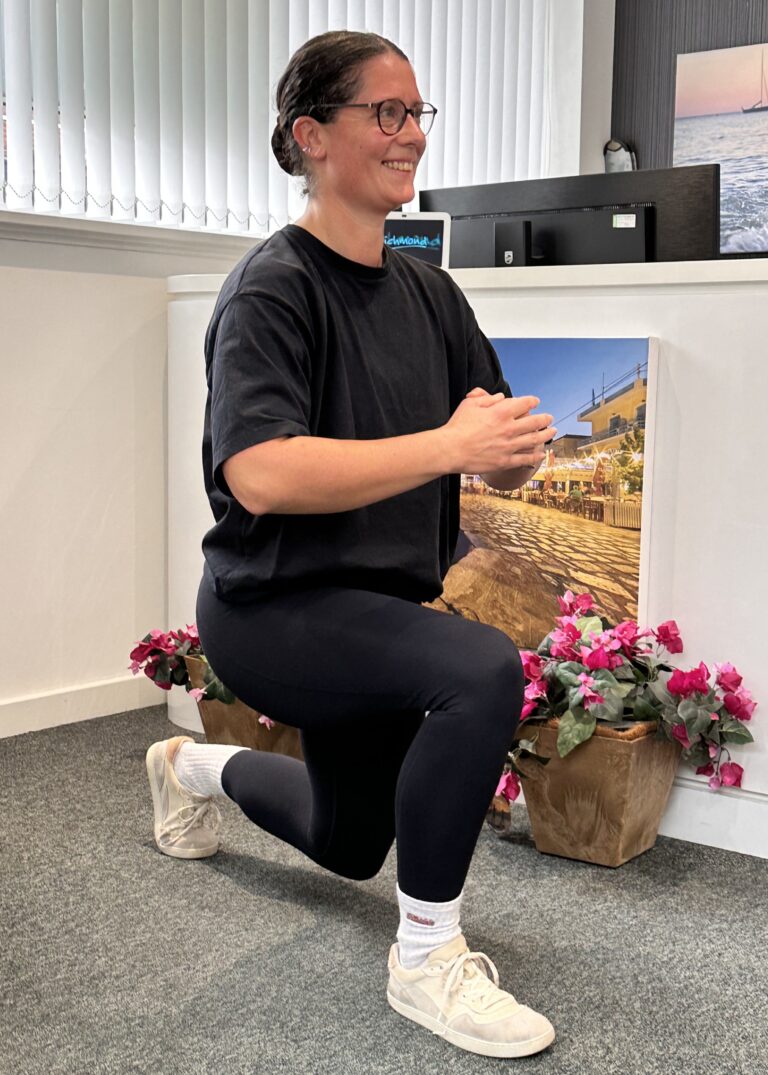
Plank
How: Balancing on your forearms, so you are facing the floor, use the strength of your abdominals and glutes to keep your hips raised to shoulder height (take extra care not to sag in the midsection).
Beginner-friendly: Start in the same position, but keep your knees on the ground, which will reduce the load on your core.
Advanced: Include side planks, or the more ambitious Copenhagen plank (demonstrated by Adam below!!).
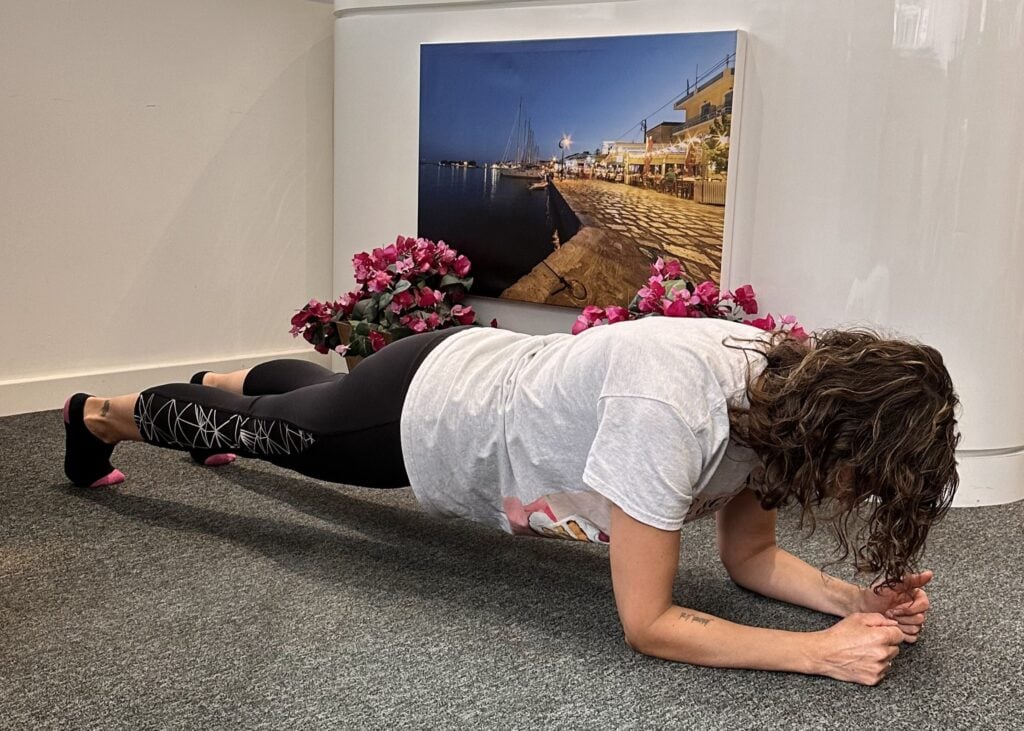
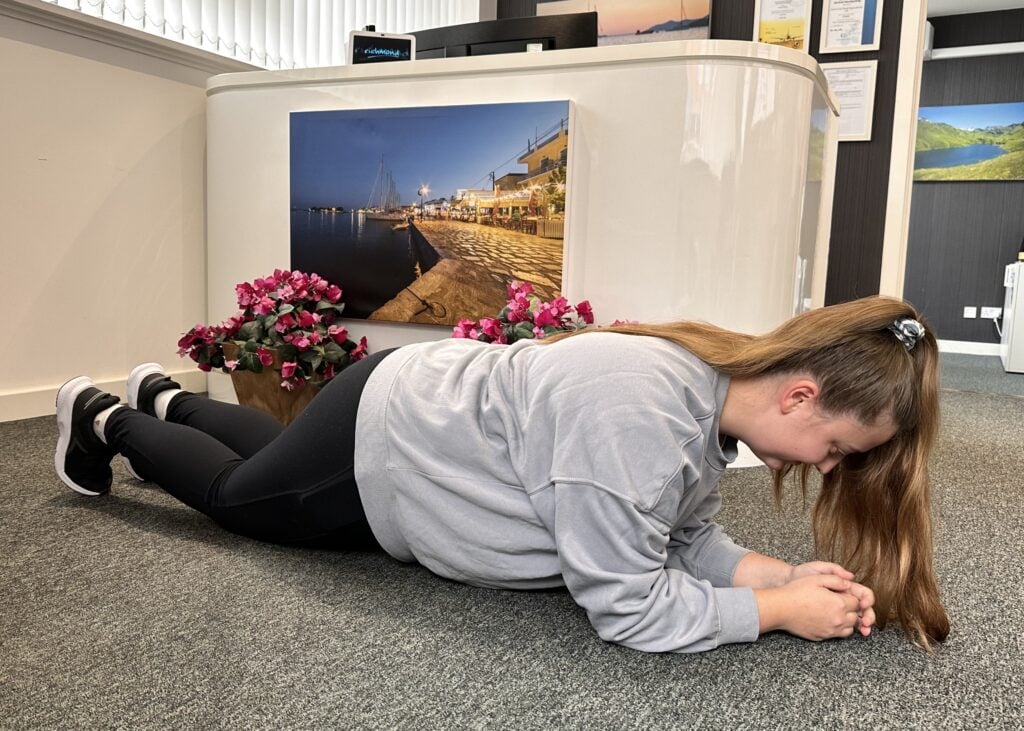
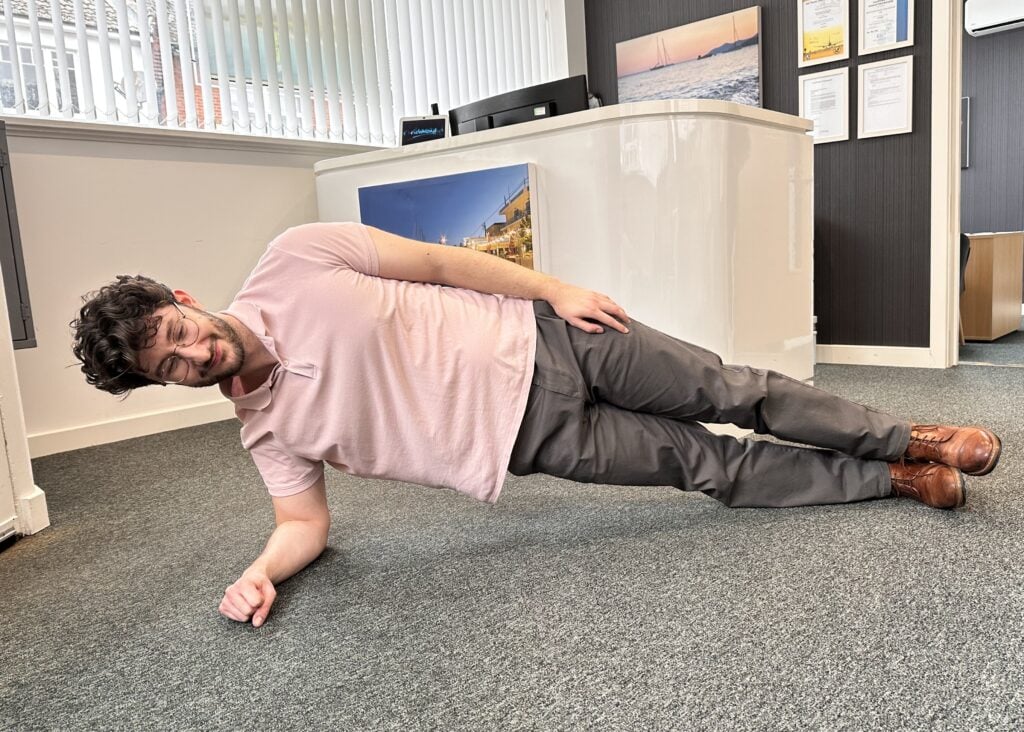
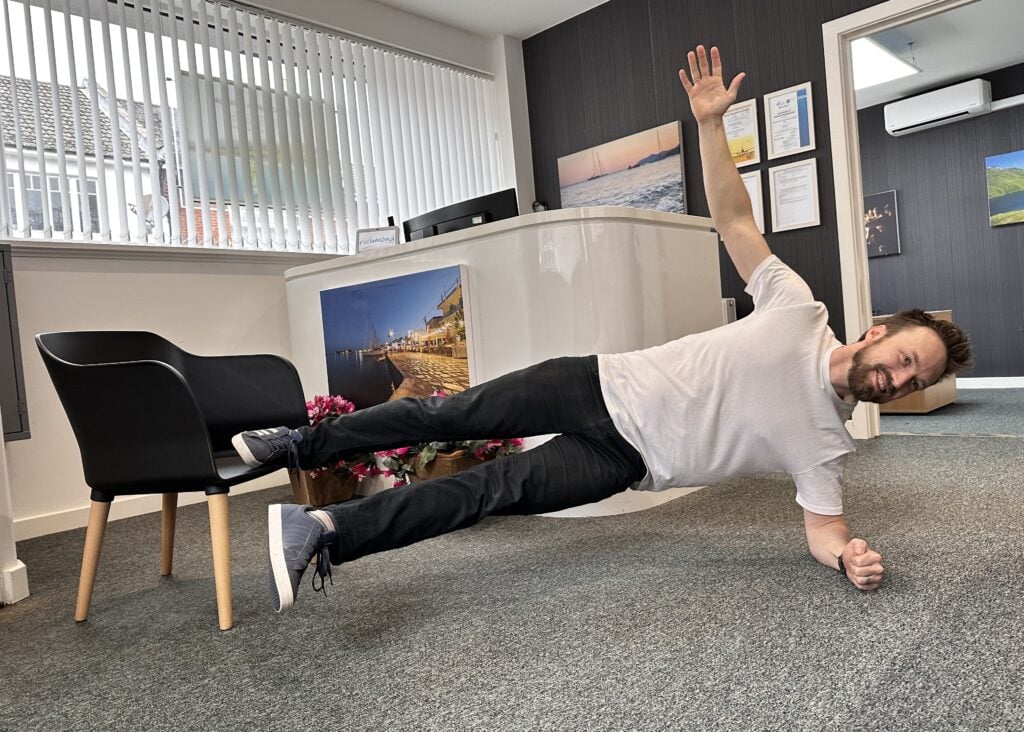
Heel-to-Toe Walk
How: Walk in a straight line, placing one foot directly in front of the other, heel touching toe.
Advanced: Add weights if you have them, or try closing your eyes.
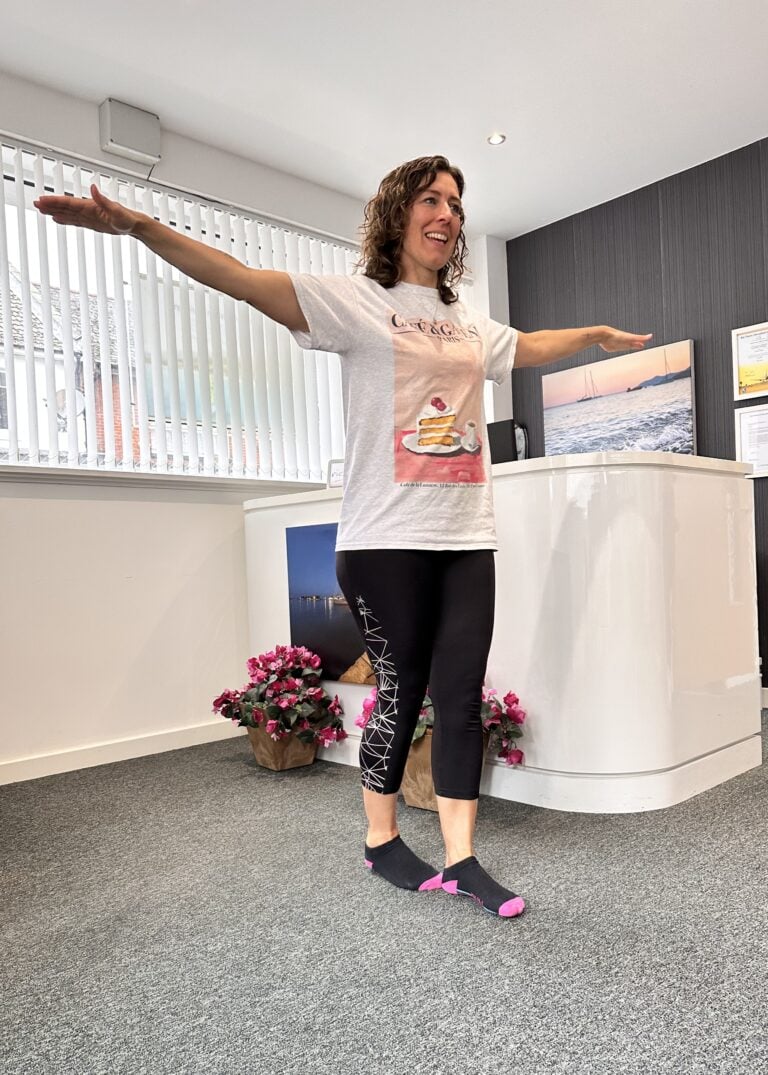
Single-Leg Hop
How: Stand on a stable surface. Gently bend one knee and lift your opposite foot from the floor. Hop with one leg, then switch sides.
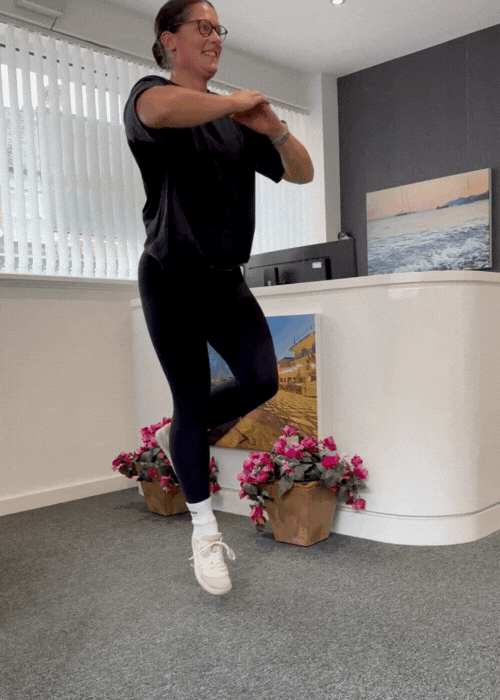
Static Heel Raises
How: Stand on a step with your heels hanging off the edge and keeping the balls of your feet on the step, lower your heels as far as you can toward the floor.
Beginner-friendly tip: Use a handrail or wall for balance if needed.
Advanced: To add intensity to the stretch, add weight, e.g. dumbbells if you have them.
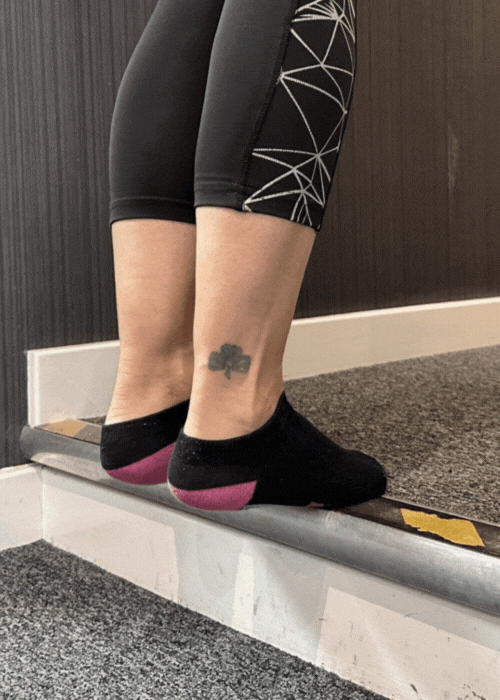
Wall Sits
How: Slide your back down a wall until your knees are at about 90°, as if sitting on an invisible chair.
Beginner-friendly: Hold a slightly higher position to reduce strain, focusing on keeping your knees comfortable.
Advanced:To add intensity to the stretch, add weight, e.g. dumbbells held down by your sides, or held out in front of you.
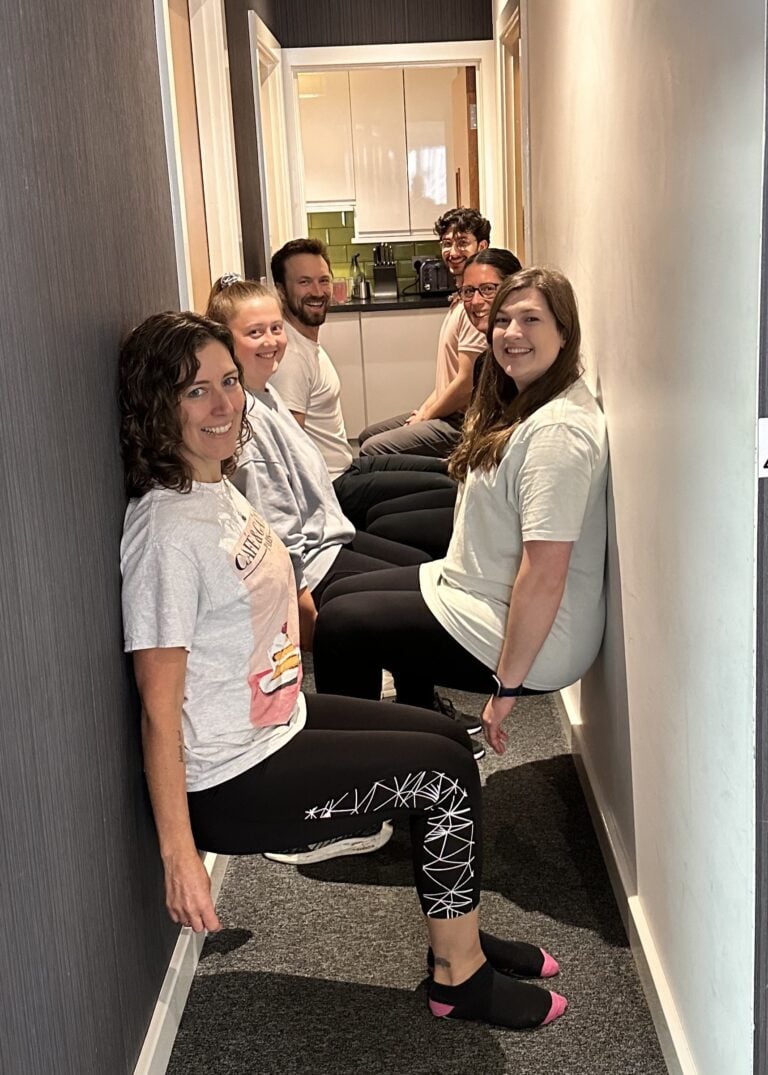
Arrive Ready to Enjoy Every Moment
Preparing for your ski holiday isn’t about chasing fitness goals — it’s about giving yourself the best chance to feel great from the moment you arrive. With just a few weeks of gentle, consistent effort, you’ll notice the difference: stronger legs, better balance, and more energy to make the most of your time in the mountains.
Whether you’re a first-time skier or you’ve been hitting the slopes for decades, it’s worth putting in the time to prepare your body well.
And of course, when you’re there, take the time to stretch and warm up before you get going, and treat yourself to a relaxing soak in the chalet’s hot tubs and saunas at the end of each day! Vin Chaud, anyone…?
